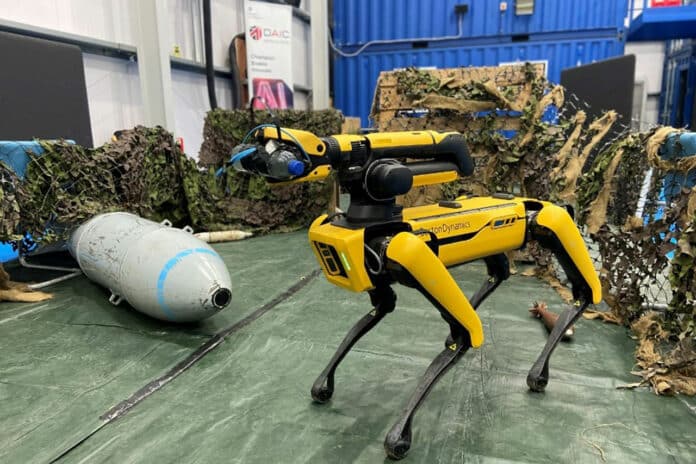Robotic dogs like the ones developed by Boston Dynamics have great potential to assist in emergency situations. They can search for survivors in collapsed buildings or explore areas that are too dangerous for humans to enter. However, the challenge is to make these missions more accurate with minimal human intervention.
To address this issue, the UK government recently organized a Hackathon, inviting 40 programmers to develop innovative tech solutions for the British Army. At the Defence AI Centre (DAIC) sponsored Hackathon, the coders from across the country demonstrated how AI-enabled robotic dogs could carry out potentially dangerous tasks that would otherwise be undertaken by Army bomb disposal experts. The goal of DAIC, which was established in 2021 to accelerate the use of AI for defense purposes, was to bring together the brightest minds to develop deployable systems.
The hackers divided themselves into five teams to exploit the AI capabilities of the robotic dogs, which are able to climb stairs, avoid obstacles, and move over rough ground. During the first two days, the teams developed their strategies, finetuned their programming, and then proceeded to test the dogs in an environment that simulated real-life, high-pressure situations.
On the final day, the teams demonstrated their achievements to the members of 29 Explosive Ordnance Disposal (EOD) & Search Group. These members are some of the best tactical and technical explosives experts in the British Army who can neutralize explosive devices.
Representatives from 29 EOD&S Group, the DAIC, and DE&S judged the teams and awarded them in five categories: teamwork, collaboration, innovation, practical application, and endeavor and focus. The event was hosted by the Defence AI Centre in partnership with the Expeditionary Robotics Centre of Expertise (ERCoE, part of DE&S and Team Defence Information (TDI)) at the BattleLab in Dorset.
“It has been hugely exciting to see Defence, industry, and academia work together on an AI and robotics solution to a real use case, particularly one that aims to increase the safety of our people,” Cdre Rachel Singleton RN, Head DAIC, said in a statement. “Instigating and guiding this kind of collaborative innovation safely and responsibly is among the most important work we do at the DAIC.”
Lt. Col. Chris Coles of 29 Explosive Ordnance Disposal (EOD) & Search Group said, “It has been an absolute pleasure to see the talent and commitment to endeavor to create bomb disposal tools that do not require a person up close and personal. I have witnessed a number of things today that will absolutely facilitate research and development in the EOD&S space.”
